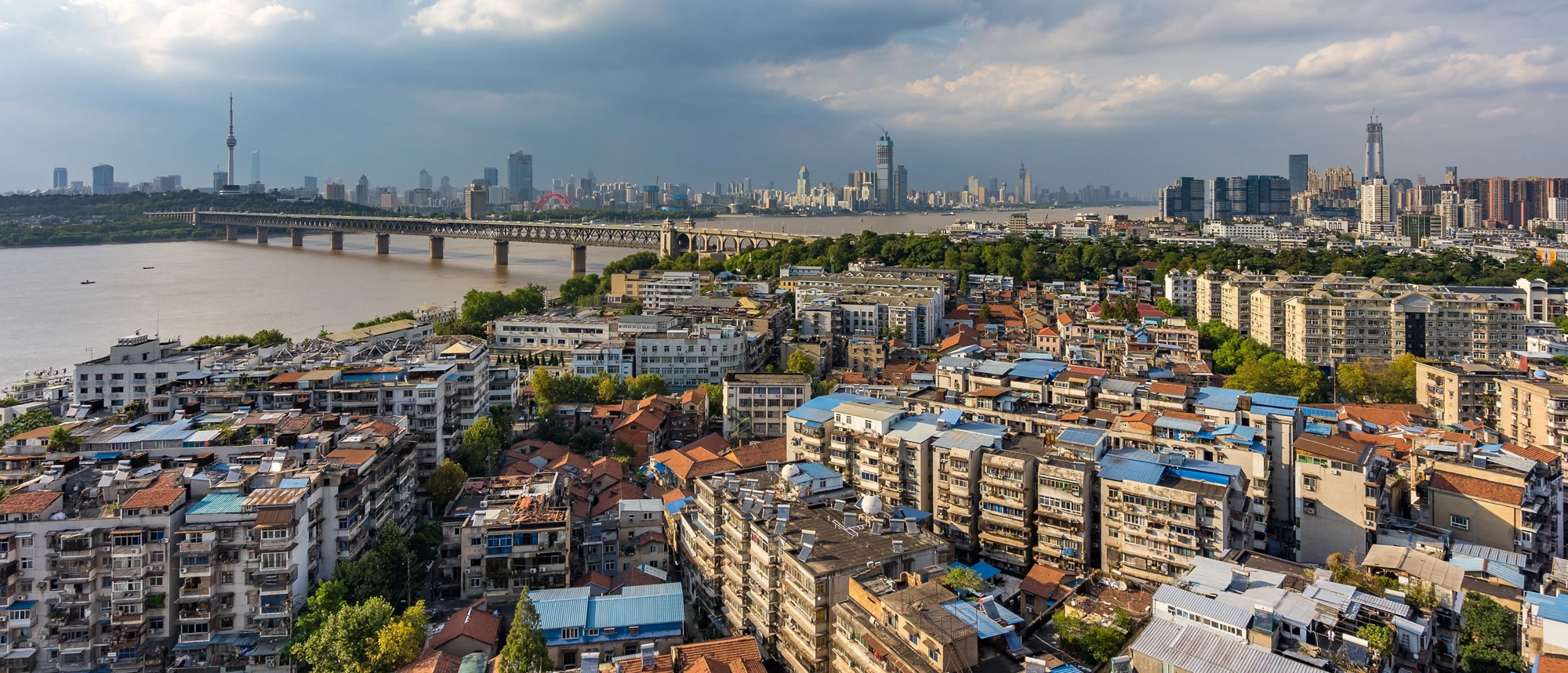 Panoramic skyline, Wuhan, China.
Panoramic skyline, Wuhan, China.
Making a link between a city’s density and its vulnerability to epidemics may seem like an obvious connection. But it may, in fact, be off the mark.
Since the outbreak of the coronavirus (COVID-19) and its spread across the globe, places with high urban population density have seemed to be especially at risk to some observers. A common argument is that high population density makes cities more vulnerable to epidemics because of the possibility of frequent interpersonal contacts. New York City is often cited as a prime example.
This argument may sound straightforward, but on examination, its premise is not well-grounded. If you look around the world, some extremely dense cities, such as Singapore, Seoul, and Shanghai, have outperformed many other less-populated places in combating the coronavirus.
Based on evidence from China, we would like to present a counter argument.
To find out whether or not population density is a key factor in the spread of the coronavirus, we collected data for 284 Chinese cities on two relevant indicators: (i) the number of confirmed coronavirus cases per 10,000 people; and (ii) the population density in the built-up urban area. We presented this data in Figure 1 below.
The reason for choosing Chinese cities is that they have been through the entire circle of the coronavirus outbreak, and the numbers of confirmed cases have stabilized. The 12 cities from Hubei Province, where Wuhan is located, are excluded from this sample because they were subject to a very different level of risk when the virus first hit the country. In addition, confirmed coronavirus cases from inbound international flights are not included either, as they were attributed to the city of the first entry point and, therefore, are irrelevant to the local spread of this contagious disease. The size of the bubble is proportional to the per capita GDP in each city, to illustrate whether city wealth has an impact on response to the coronavirus outbreak.
The evidence we’ve found does not support the argument that density is a key determinant of coronavirus transmission risk. As illustrated by Figure 1, cities with very high population densities such as Shanghai, Beijing, Shenzhen, Tianjin, and Zhuhai have had far fewer confirmed cases per 10,000 people. We notice that the group of dense cities are also the wealthier ones (with bigger bubbles), making them more able to mobilize enough fiscal resources to cope with the coronavirus. This partly explained their low infection rates.
On the contrary, cities with the highest coronavirus infection rates were those with relatively low population densities, in the range between 5,000 to 10,000 people per square kilometer. The higher infection rates can be attributed either to their strong economic connection with Wuhan – which is the case for Wenzhou, with over 180,000 people working in Wuhan despite the long distance between the two cities – or to their geographical proximity, which explains the situation in Xinyang, Zhumadian, Xinyu, and Yueyang, which are close to the provincial border of Hubei.
To further investigate the possible spatial decay effect in the spread of the coronavirus, we made another plot using the infection rate against each city’s distance to Wuhan; see Figure 2 for details. It shows that the chances of infection decline as distance to Wuhan increases. Cities in Xinjiang province (e.g., Karamay, Urumqi, and Turpan) that are over 2,500 kilometers away from Wuhan, have extremely low coronavirus infection rates.
Higher densities, in some cases, can even be a blessing rather than a curse in fighting epidemics. Due to economies of scale, cities often need to meet a certain threshold of population density to offer higher-grade facilities and services to their residents. For instance, in dense urban areas where the coverage of high-speed internet and door-to-door delivery services are conveniently available at competitive prices, it is easier for residents to stay at home and avoid unnecessary contact with others.
The World Bank’s research on urban geography has found that the 3Ds – higher density, shorter distance, and fewer divisions (i.e., better market integration) – are essential for economic development. From an urban resilience point of view, the potential risks of public health emergencies associated with the 3Ds need to be managed carefully, because as urbanization continues, we will be living in a world where people are even closer to each other than before, both spatially and economically. Over time, ensuring well-designed institutions, high-quality infrastructure, and effective interventions (e.g., social distancing and lockdown to flatten the curve of disease transmission) will be the ingredients to making cities stronger against infectious diseases.
Of course, further evidence is needed to draw conclusions on the beneficial impacts of density. But we can already say with confidence that density is not an enemy in the fight against the coronavirus.


Data source: COVID-19 confirmed cases as of April 9, 2020 from Ding Xiang Yuan real-time monitoring platform. https://ncov.dxy.cn/ncovh5/view/pneumonia?from=groupmessage&isappinstalled=0
Population density calculated based on data from China City Construction Yearbook 2018 released by Ministry of Housing and Urban-rural Development. http://www.mohurd.gov.cn/xytj/tjzljsxytjgb/
Per capita GDP data from 2018 were consolidated from the statistical yearbooks of the provinces and distance to Wuhan was calculated using GIS analytic tools.
Note: Selected cities do not include Hong Kong SAR, China; Macau SAR, China and Taiwan, China. Number of COVID-19 confirmed cases did not include those without symptoms.
Related links:
- Subscribe to our Sustainable Cities newsletter
- Follow @WBG_Cities on Twitter




Join the Conversation